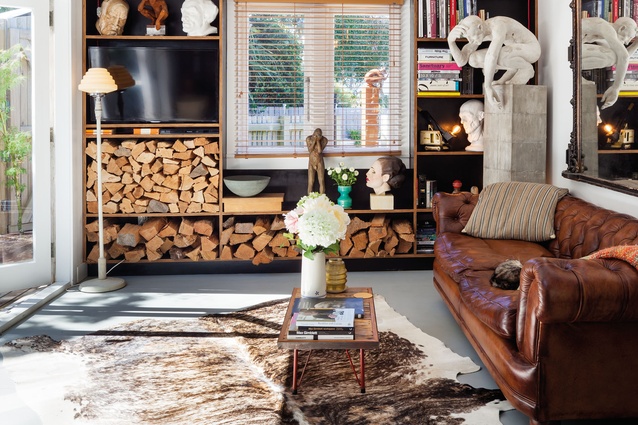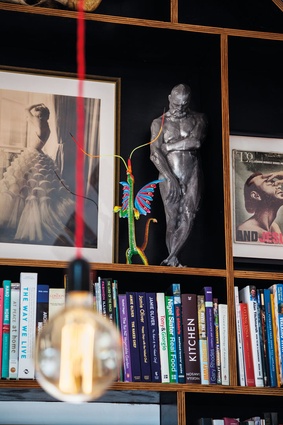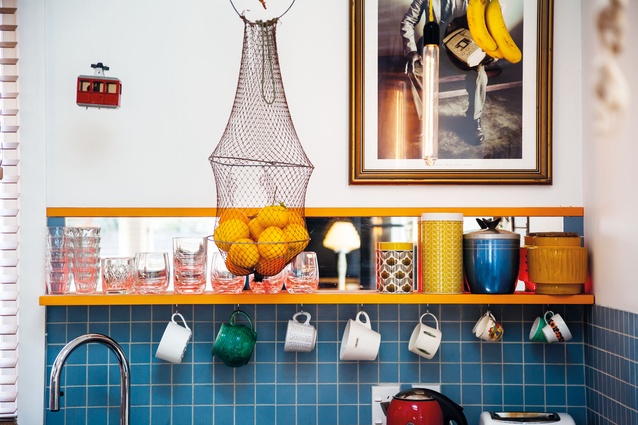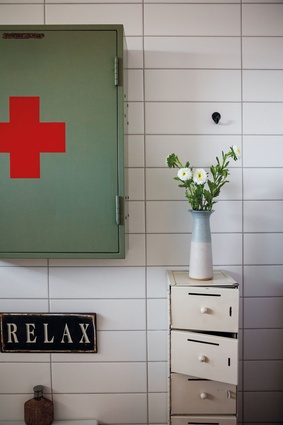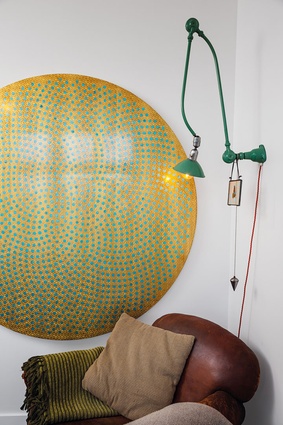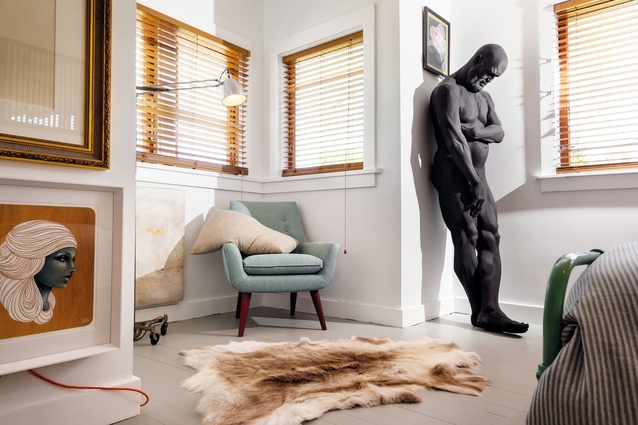A portrait of the artist
Max Patté’s 1920s’ bungalow in Island Bay, Wellington, doubles as the artist’s gallery. The British-born painter and sculptor, who trained in fine and technical art at Wimbledon College of Arts and worked for 10 years on creature effects and prosthetic make-up for movies such as Troy and Harry Potter, left London in 2006 and moved across the world to New Zealand. He took a job supervising the sculpture department at Weta Workshop, where he has the use of the facilities for his own creative work; however, prospective clients are not able to enter the restricted world of Weta so Patté, 36, shows his work at home.
Sculptures of two enormous, pugnacious bouncers, titled Sentinel One and Two and made from glass-reinforced concrete, flank the front door. They were inspired by sculptures of two soldiers made for the Anglo-Belgian War Memorial in Brussels by Patté’s favourite sculptor,
Charles Sargeant Jagger. Also, in the sheltered back courtyard, an outside fireplace backed by a mirror is guarded by two bearded, armoured dwarf maquettes that Patté sculpted for The Hobbit. Their design, inspired by sculptures at a monument in Leipzig, Germany, was a collaboration between Patté and senior Weta designers Gus Hunter and Nick Keller. And in Patté’s bedroom, Rest, a life-sized, naked male sculpture, leans into a corner facing the bed.
“I don’t really know where Rest came from,” says Patté.
“I remember going into the studio a few weeks before Christmas 2012 and not having anything particular to do that day. Quite a lot of my work has ended up that way, from sketching or doodling and something comes out of it – an organic, subconscious way of doing work.”
Patté also has a personal story for each work by other artists displayed in his house. Gladioli II by photographer Steve Thomson, which hangs in his study, was bought at a party hosted by actor Sir Ian McKellen (who has Patté’s sculpture Reflection in his London home): “Gladioli I and Gladioli II were on Ian’s wall. I found myself staring at them for ages and I’m not huge on photography. So I bought [an edition of] one. I felt it was a really nice souvenir of that moment and of our relationship on The Hobbit.”
A head displayed in the bookcase is another favourite. It was crafted by Patté’s friend and mentor Julian Murray (who supervised his work on Harry Potter and Batman Begins). Patté’s own sculptural style is both rugged and lyrical. He imagines pieces in a setting as he makes them – his five 2.6m-high, cast-iron Clydesdales, The Frolic and the Fancy, were custom made for Michael Hill’s golf course above Arrowtown; Solace in the Wind, a human figure buffeted by the wind, arcs out from the waterfront in Wellington.
“Art can either sing in a really nice environment or die if you put it in the wrong place,” says Patté. “That’s why I like big sculptures, because you are almost forcing the person to give it its own space.”
Patté often starts by making clay maquettes of ideas; editions of his work are cast in iron and bronze via the lost-wax process. The facilities at Weta Workshop, where he’s worked on The Lord of the Rings trilogy and other films, allow him to explore computer numerical control (CNC) milling that produces sculptures with a topographical effect. He scans the clay model then sends the image to the CNC machine, which carves the metal to the right shape.
Patté bought his single-storeyed, gabled bungalow in December 2012 and shares it with his partner, event manager Amy Fitzgerald, 34. A modest 80m², the house stands on a 212m² corner section at the top of a steep street. Patté loves the south Wellington coastline he can see from his bedroom and garden.
The décor mirrors the strong masculinity of his work, along with his love of light and sense of proportion. The ceiling in the kitchen, dining and living area was too flat for Patté so he lifted it 1.5m and inserted skylights. He made the rustic kitchen cabinetry and dining table from recycled timber; the black Fritz Hansen dining chairs he found in a skip in Sweden. Other treasures from a previous London home include a leather Chesterfield and a Charnwood woodburner made in the Isle of Wight.
In his study, a gold painted circle by Patté is the first in a new series of paintings and sculptures that herald his exploration of the mathematical concept of the Golden Ratio and “our connection with everything else around us,” he says. “There is a definite departure from the work I was doing. I don’t want to be an artist in one particular medium or style. The paintings will still definitely have a link to the sculpture I’m doing. But the sculpture is slowly becoming more abstract and cleaner and more colourful.”
His house is something of a piece of art too: “I set out to create a nest and it’s all that and more. I don’t think I have ever before owned a house that I’ve longed to get back to if I’ve been away. I feel very comfortable and peaceful here.”
For an interview with the artist, click here.


